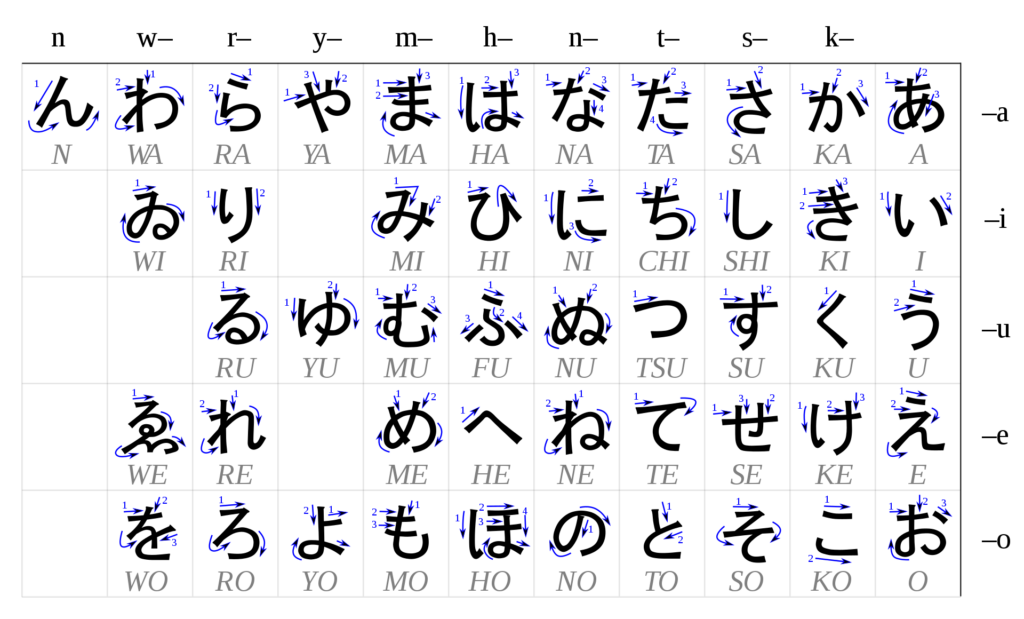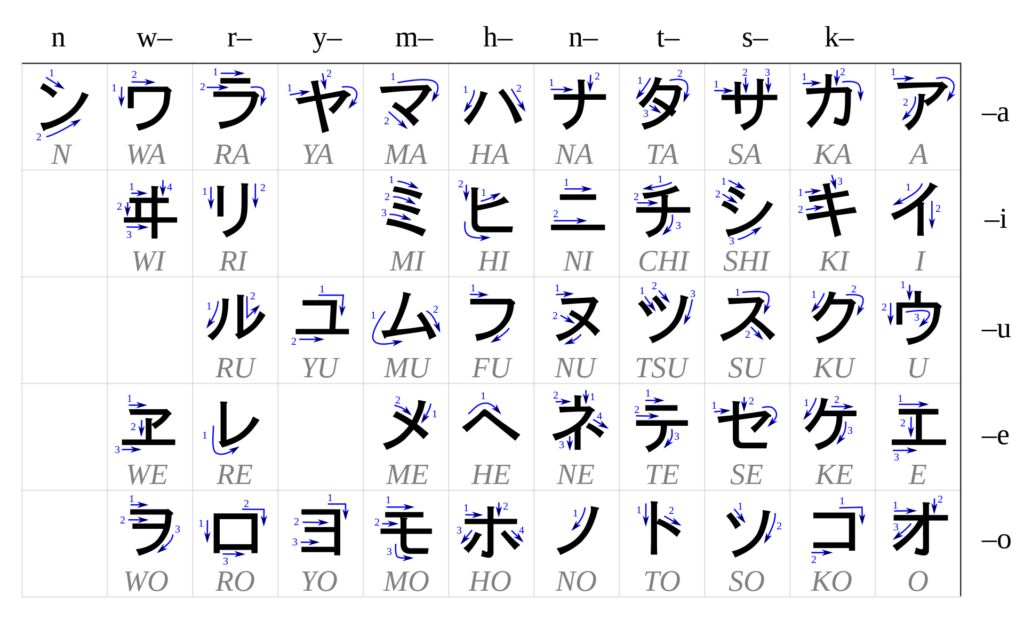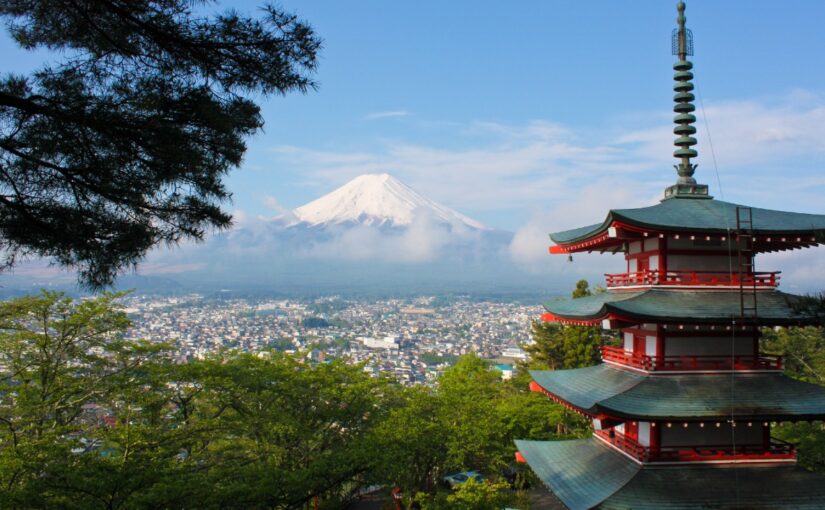The Japanese writing system consists of a combination of kanji, which are adopted Chinese characters, and Kana. Kana itself consists of Hiragana and Katakana.
Hiragana is primarily used for native or naturalised Japanese words and grammatical elements.
Katakana is primarily used for foreign words and names, loanwords and scientific names. Almost all written Japanese sentences contain a mixture of Kanji and Kana.
Hiragana – ひらがな

Additional Hiragana are formed by adding special signs to the Hiragana characters.
- 濁音 (dakuon) – ( ゛)
- 半濁音 (handakuon) – ( ゜)
- 拗音 (youon) – (ゃ, ゅ or ょ)
- 促音 (sokuon) – (っ)
- 長音 (chouon) – second vowel
Katakana – カタカナ

For example, テレビ (te re bi) means television.
Additional Katakana are formed by adding special signs to the Katakana characters.
- 濁音 (dakuon) – ( ゛)
- 半濁音 (handakuon) – ( ゜)
- 拗音 (youon) – (ャ, ュ, or ョ)
- 促音 (sokuon) – (ッ)
- 長音 (chouon) – (ー)
